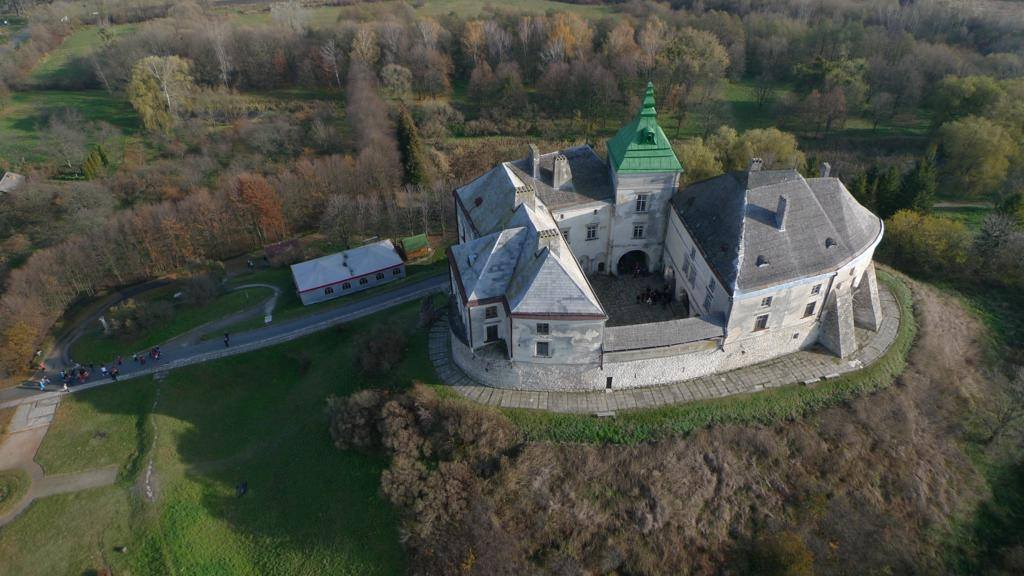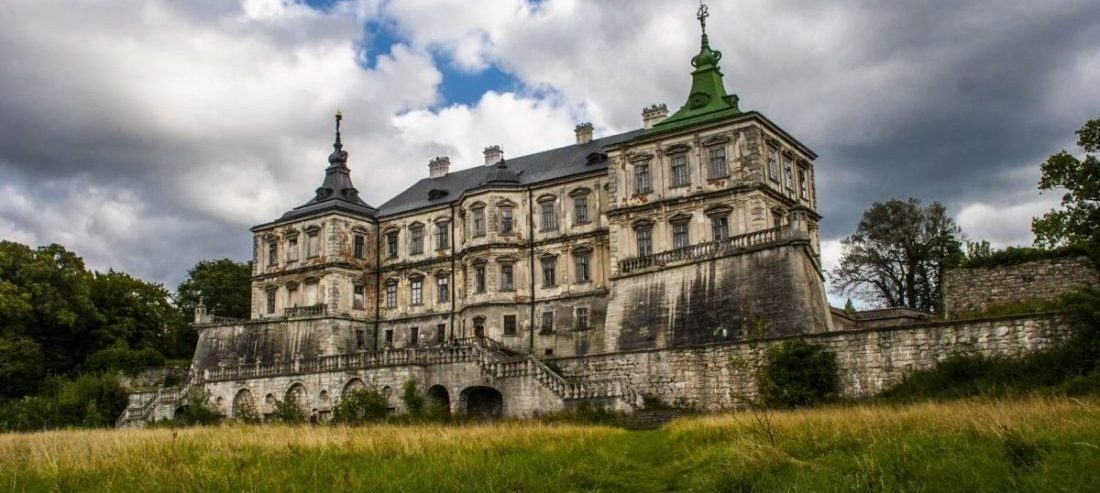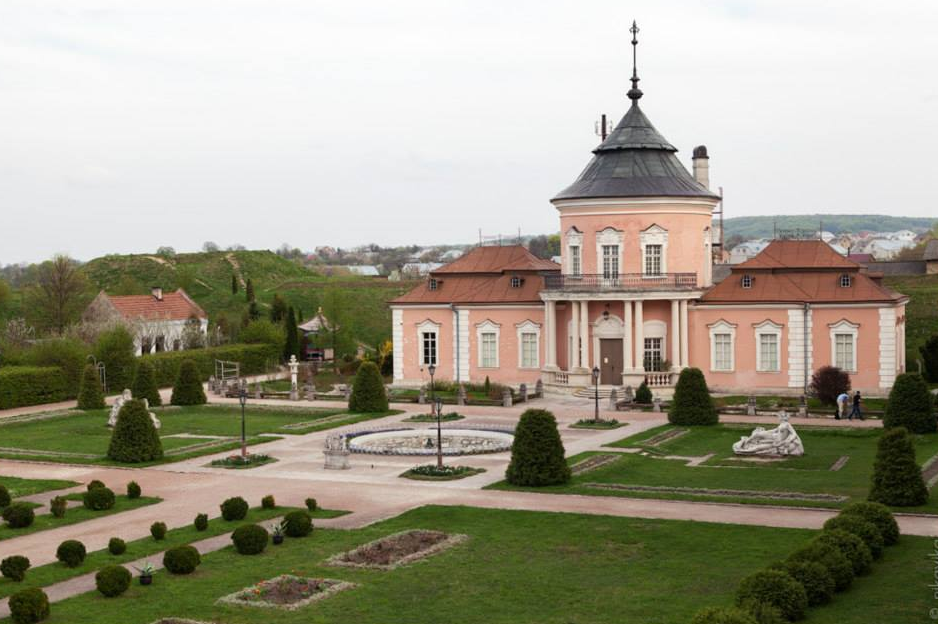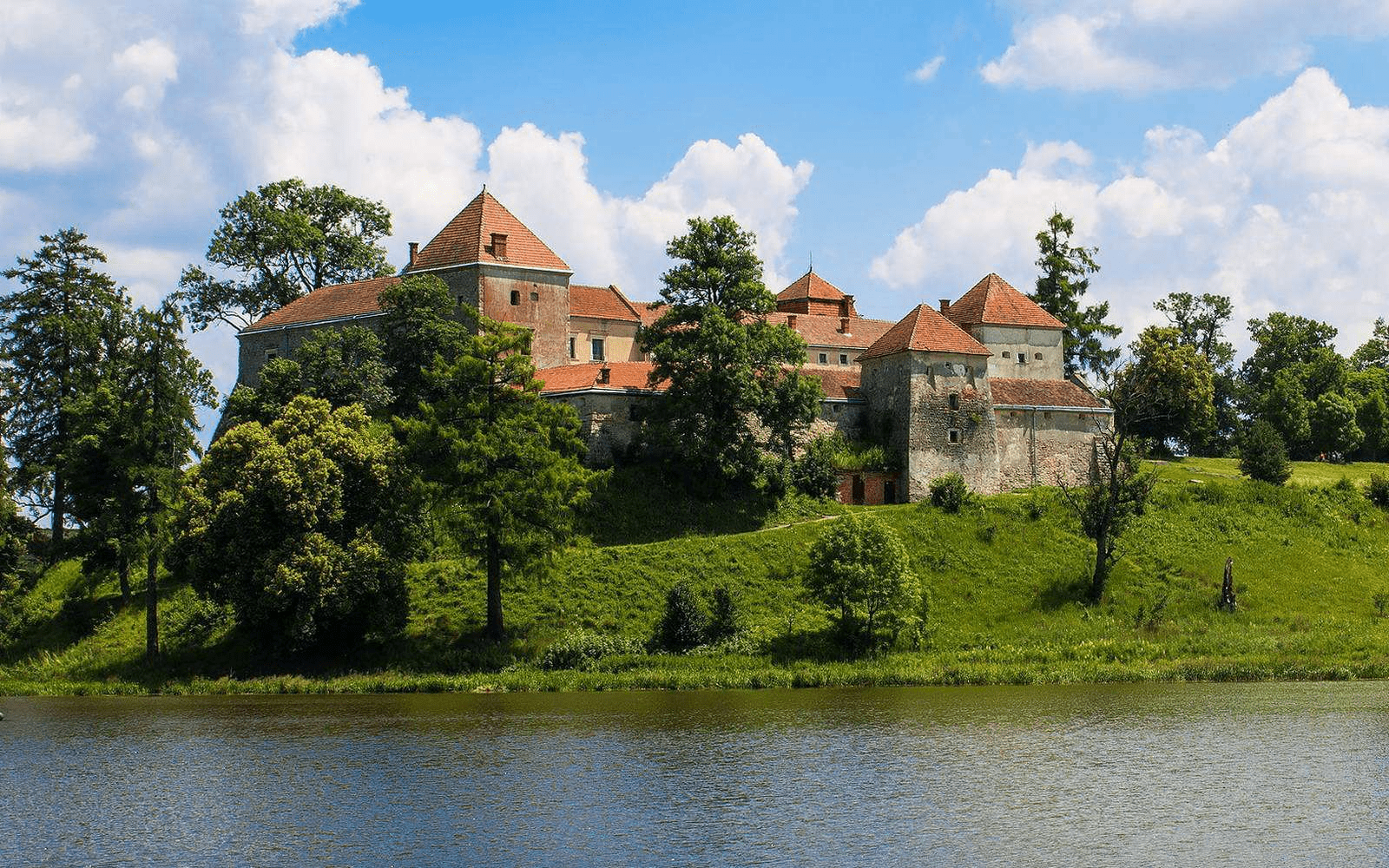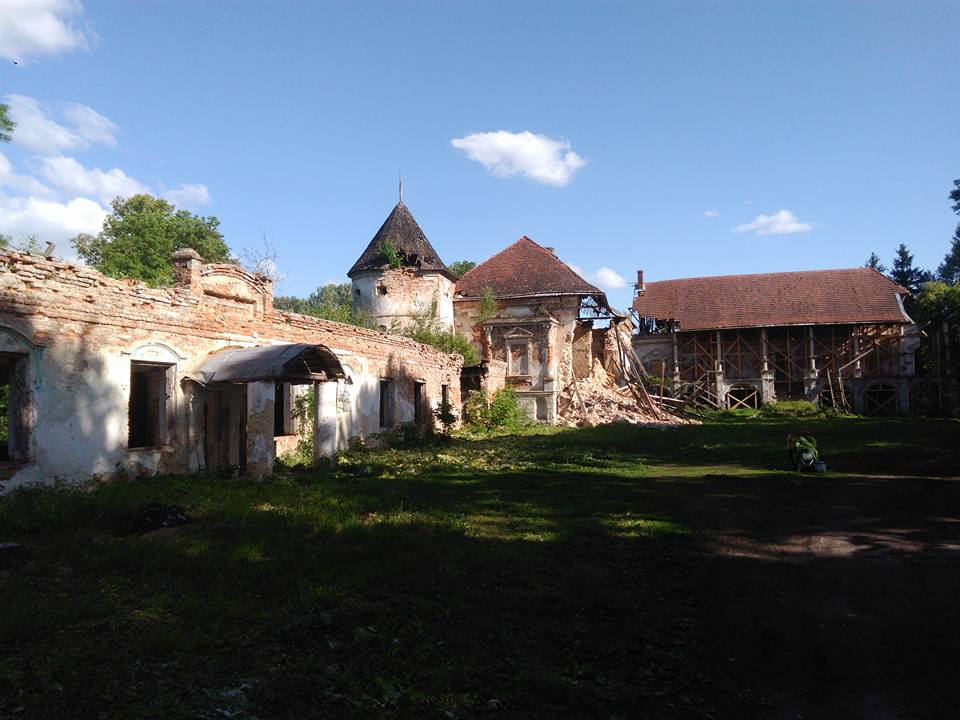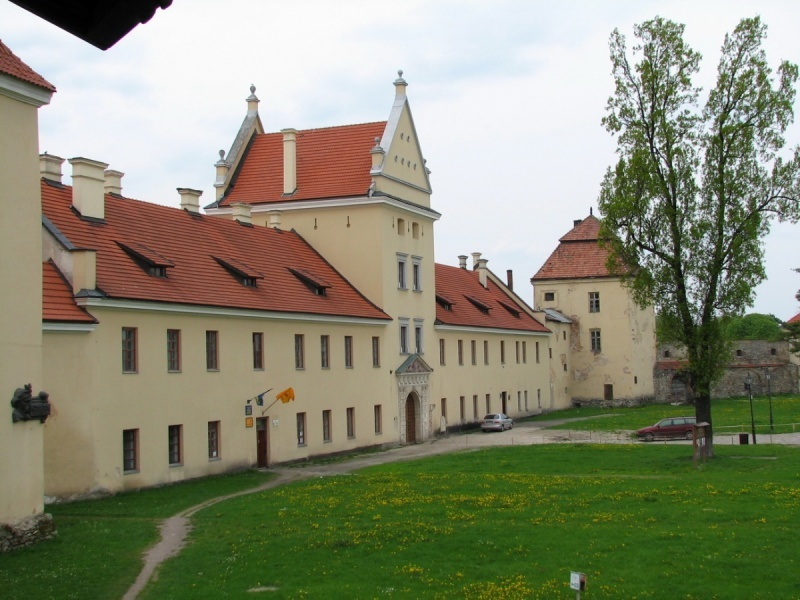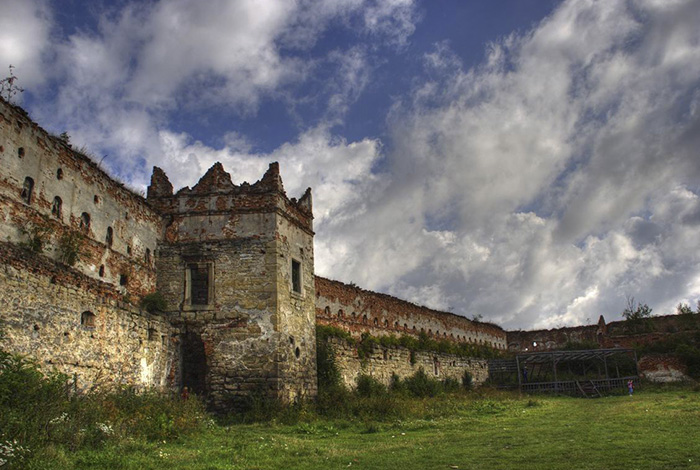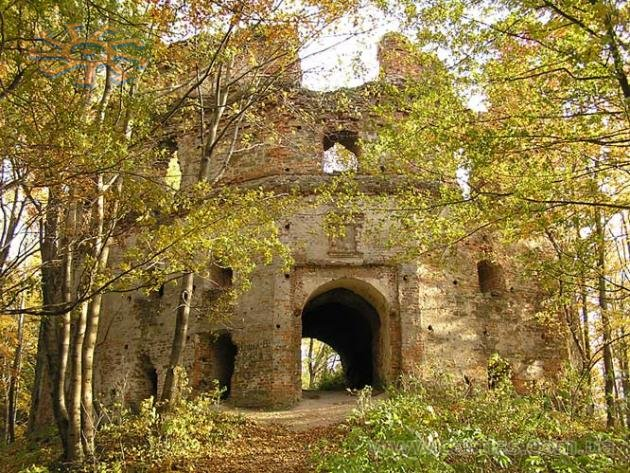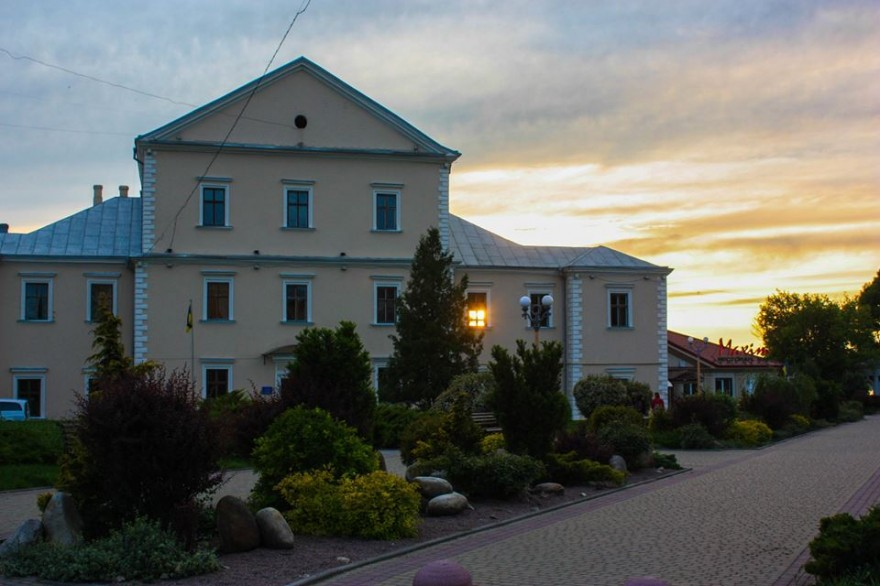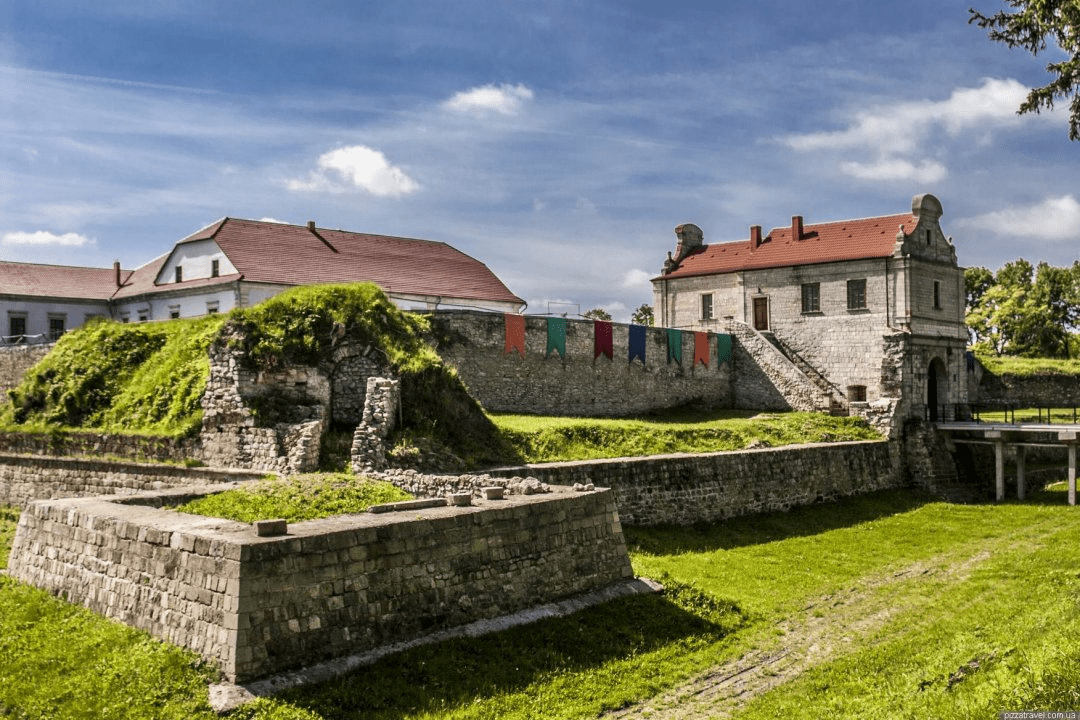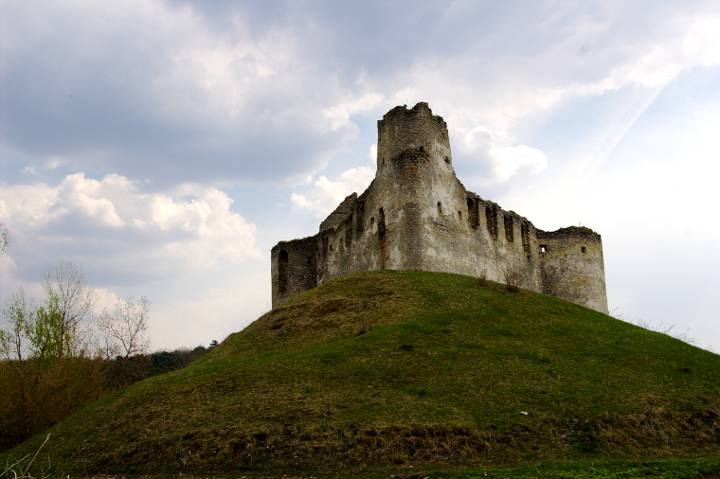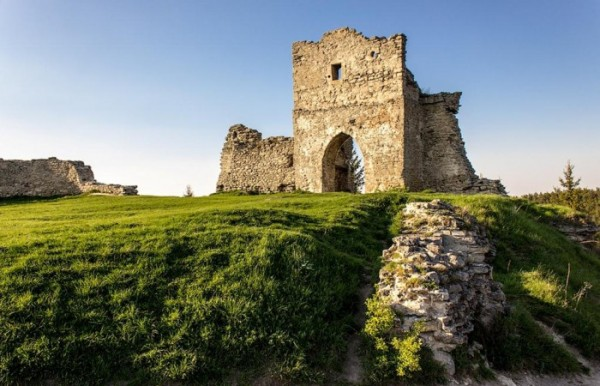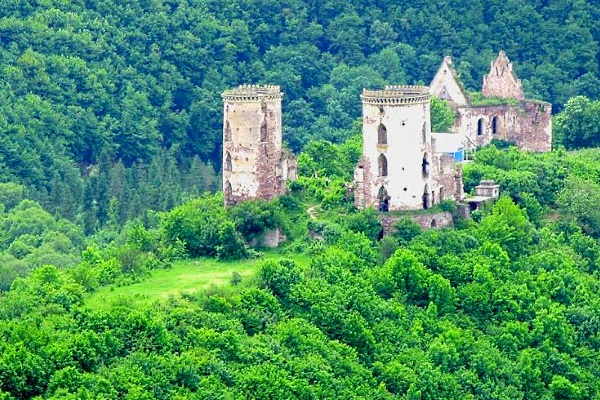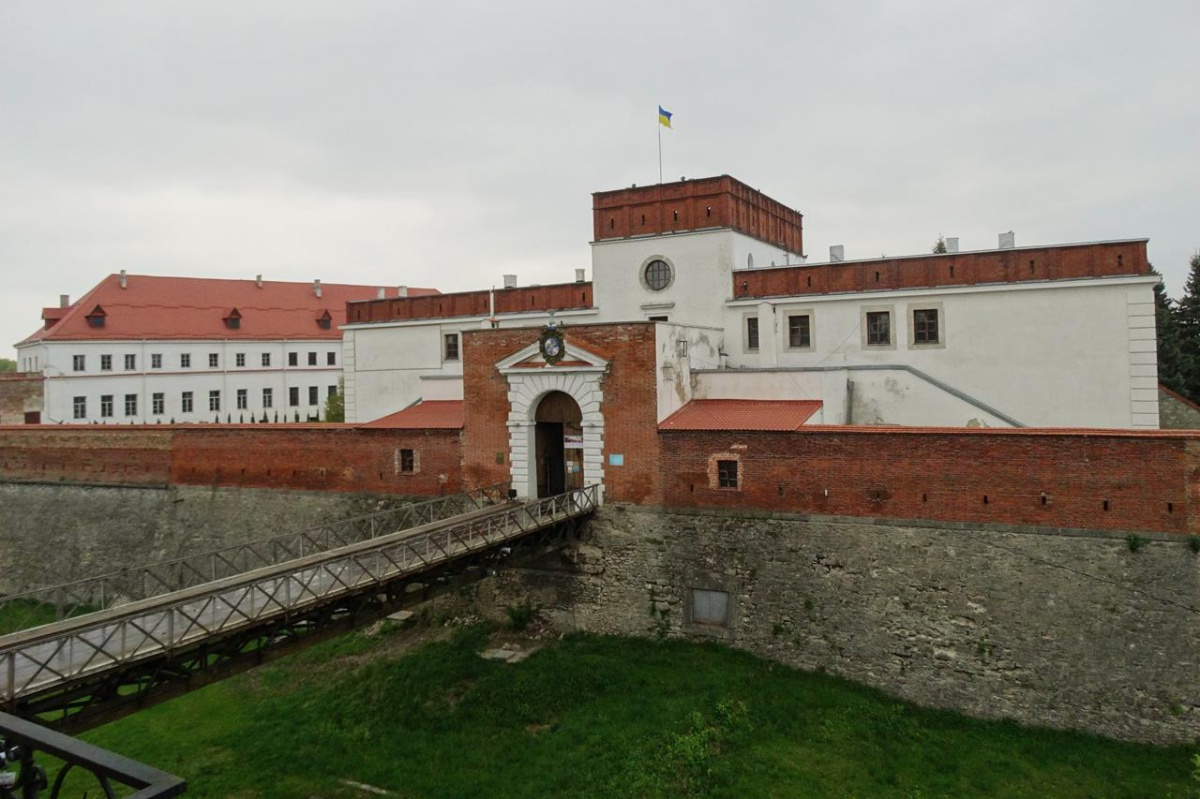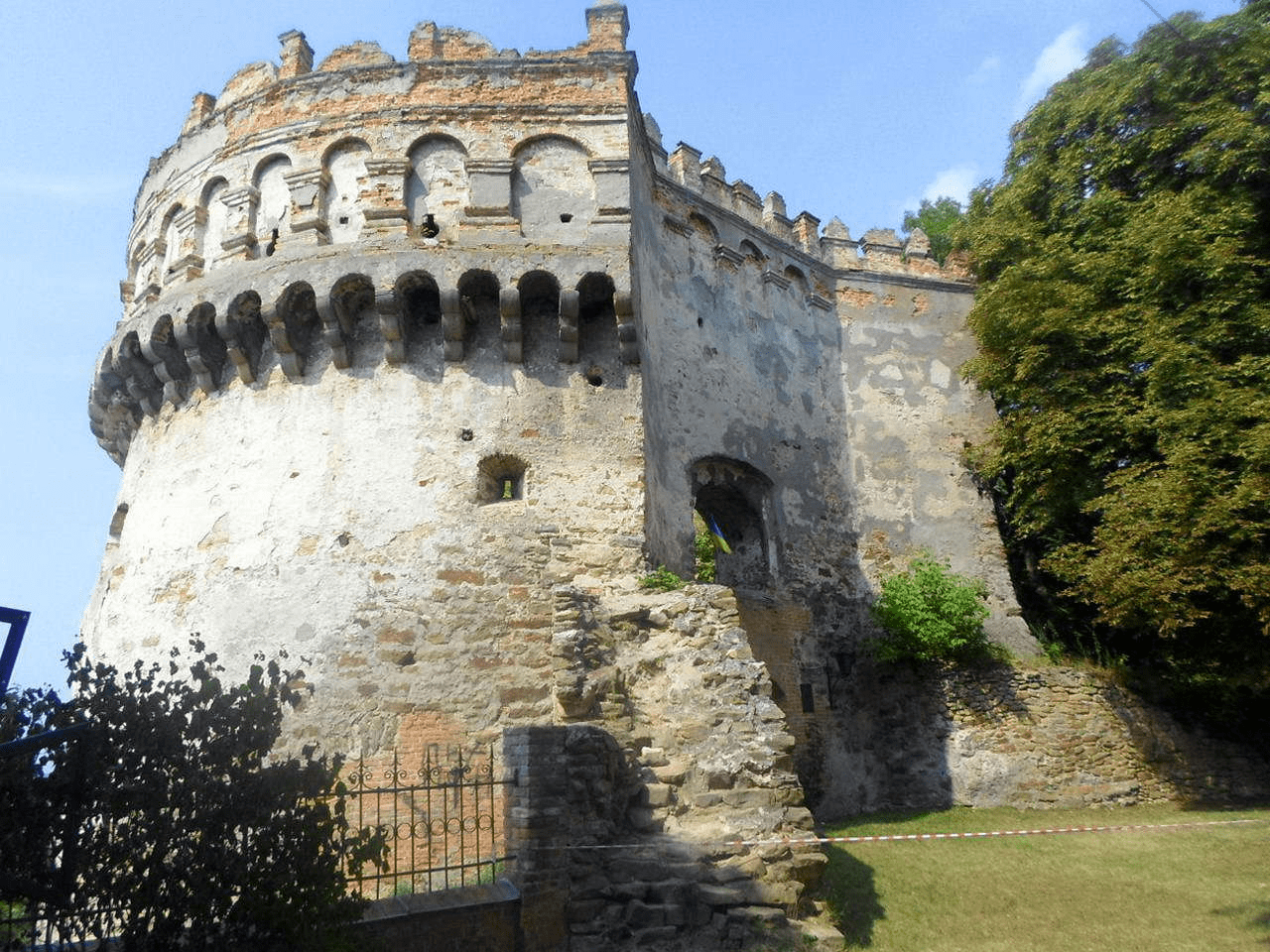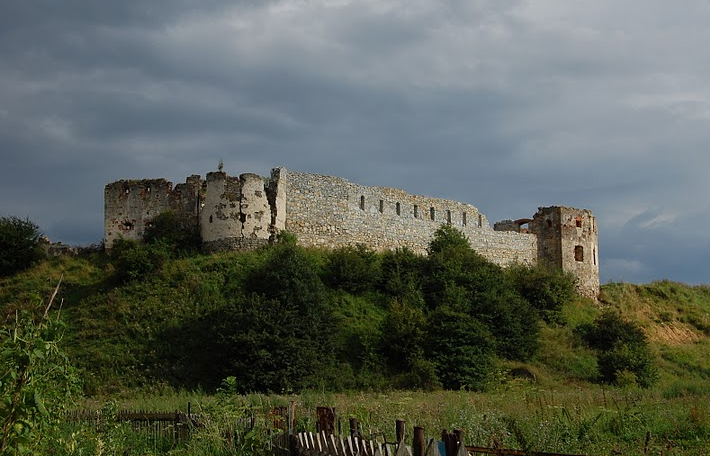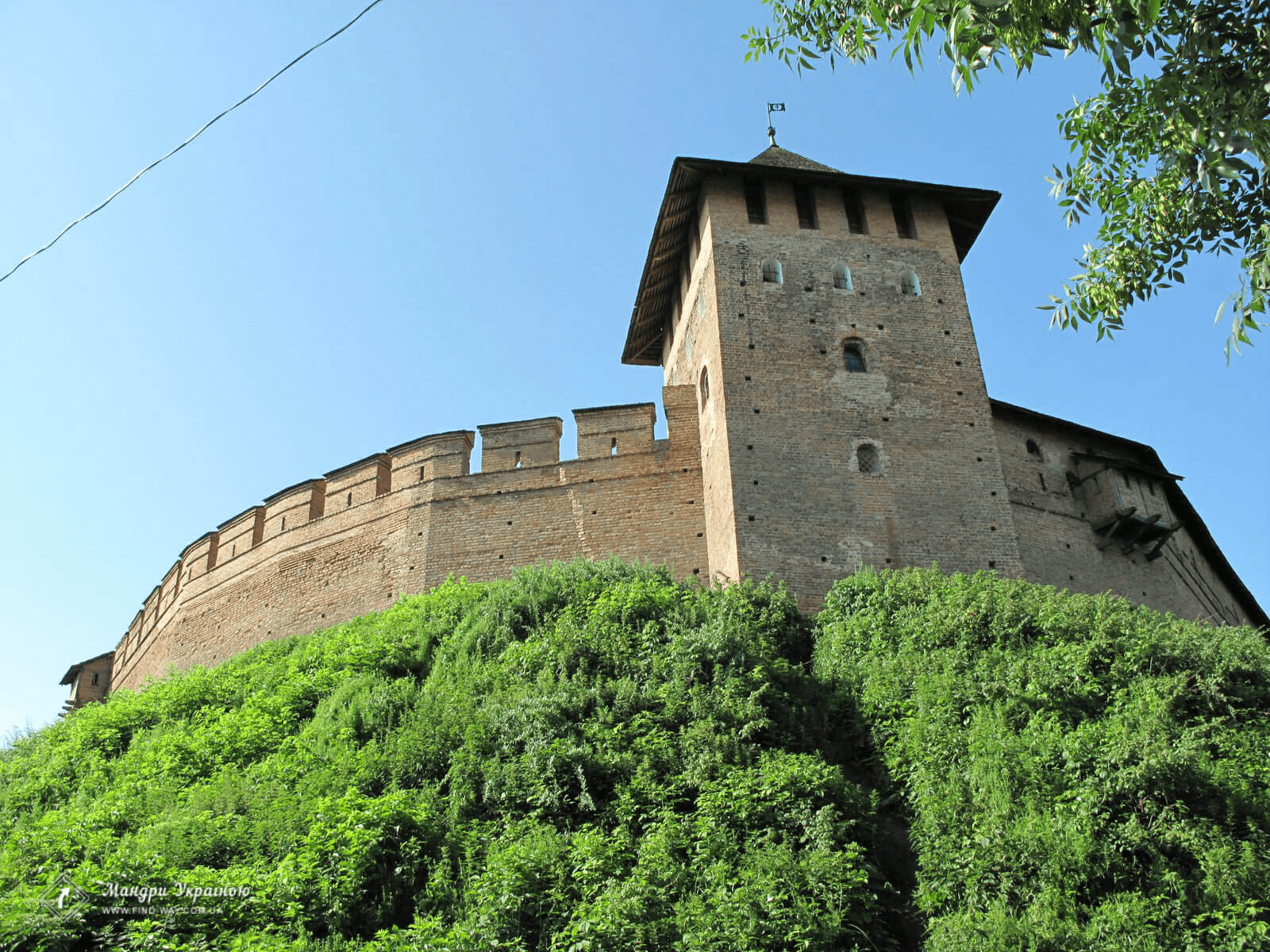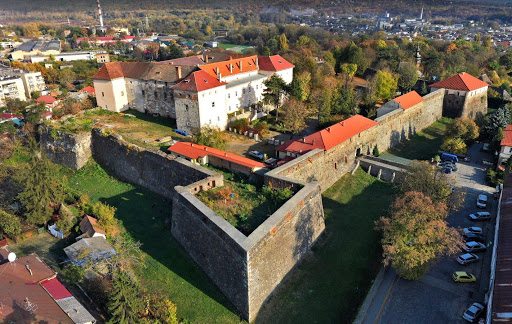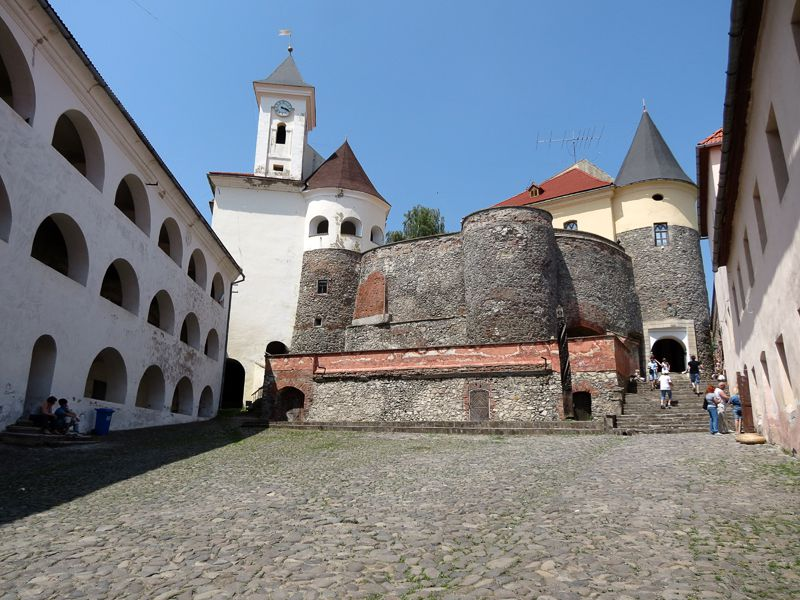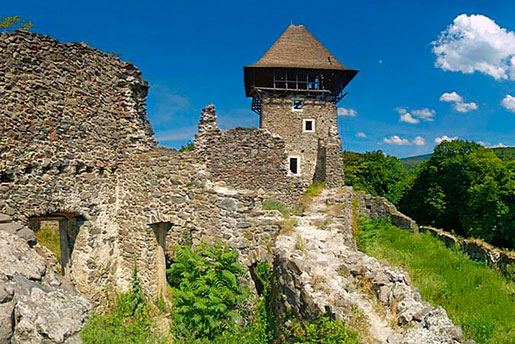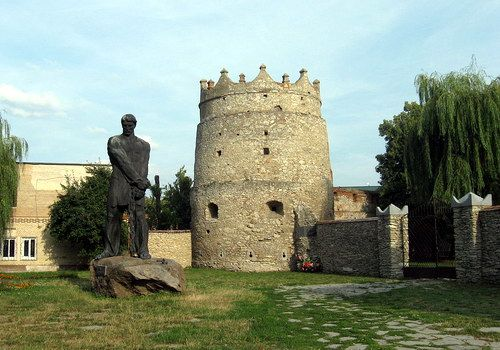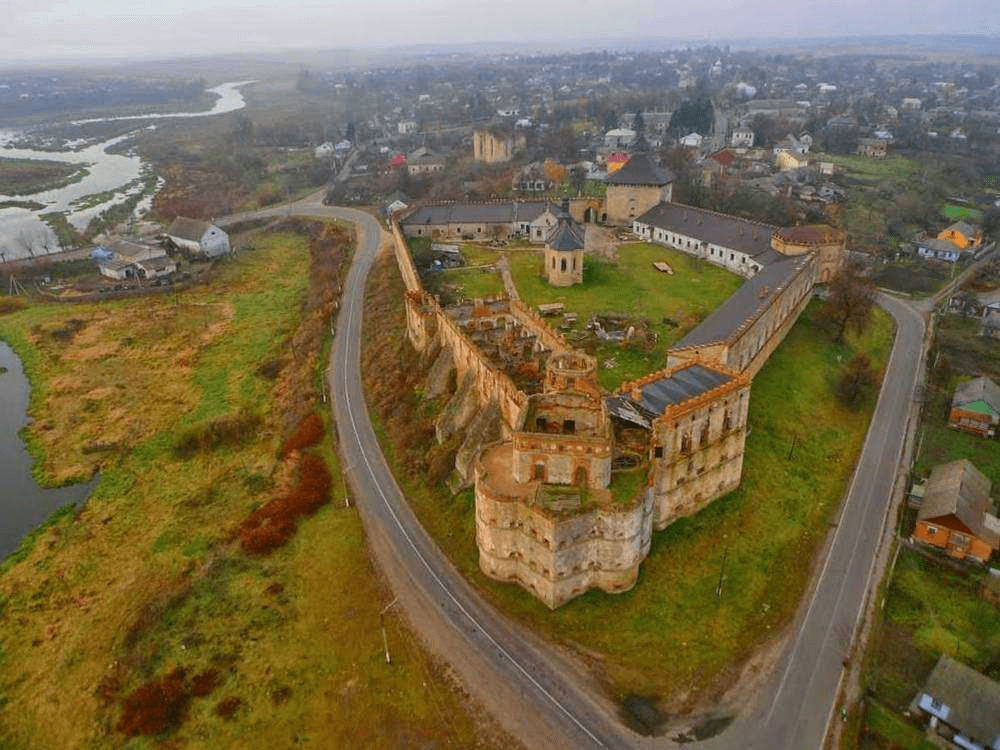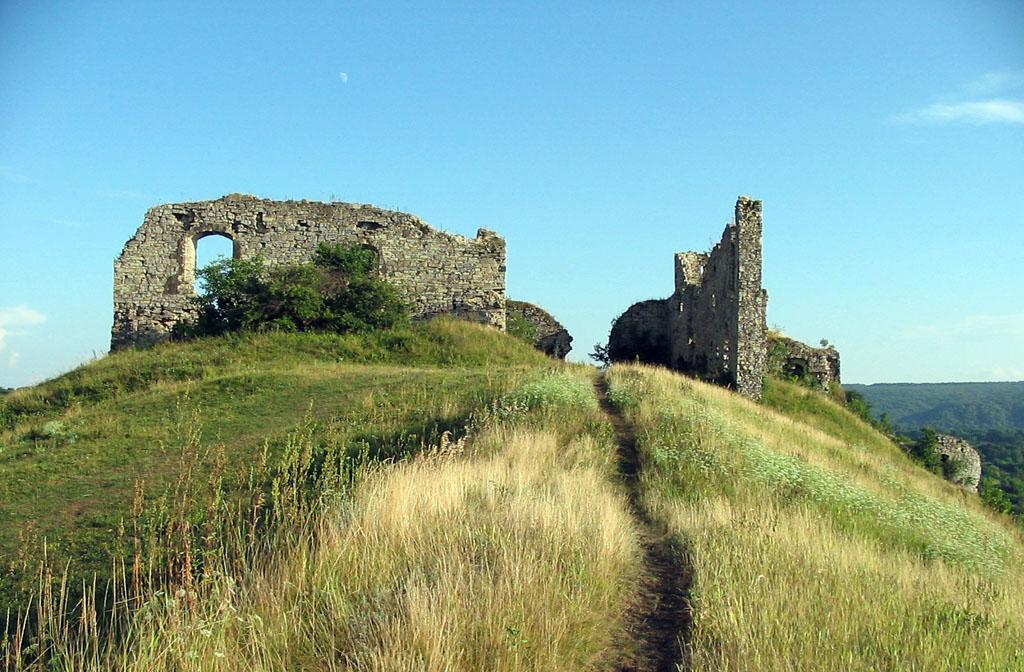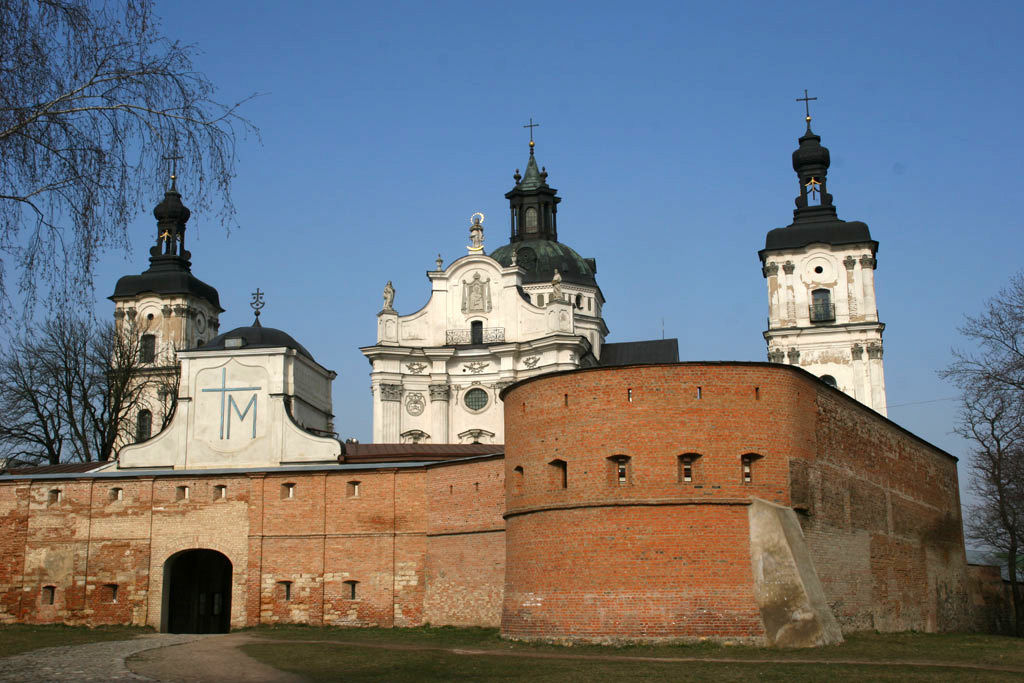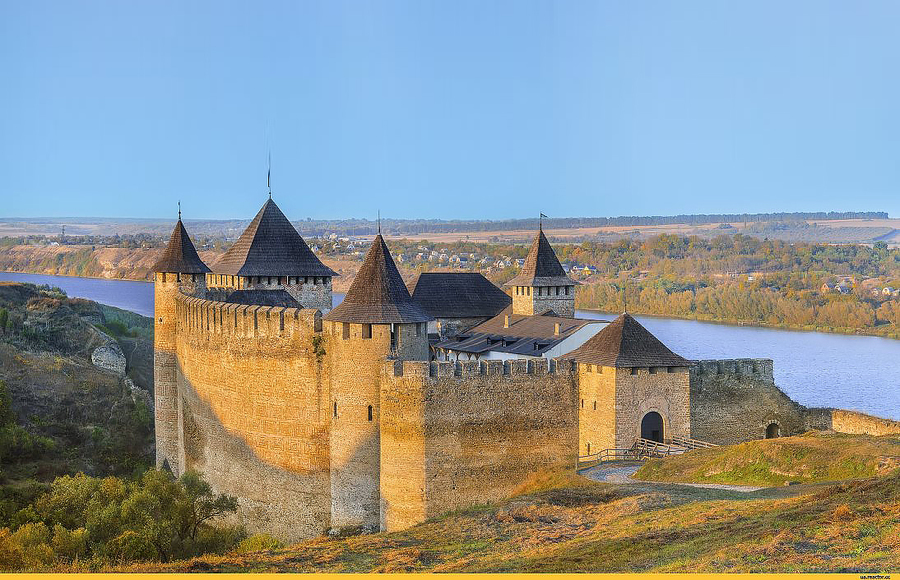Dinosaur bone lamps, ghosts, and mysterious wells: what do the walls of Ukrainian castles hide?
Ukraine has something to brag about: we're talking about 25 Ukrainian castles that everyone should visit.
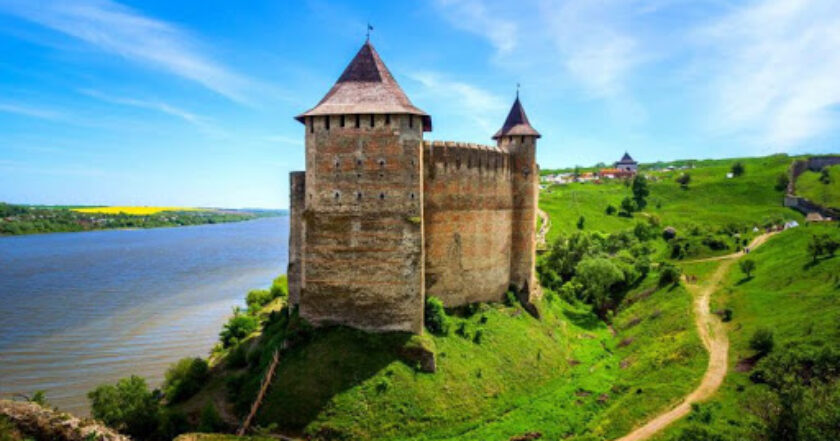
The pandemic year gave us a wonderful discovery: traveling around Ukraine is interesting and cool. We actually have something to surprise with, and something to be proud of. Historic sites, impressive architecture, charming ancient towns, picturesque villages, and stunning scenery.
The real gems in Ukraine's tourist crown, of course, are the ancient castles: stone giants, frozen in time and preserving many stories, mysteries, and secrets. Today only ruins remain of some of them. But ruins don't mean just sadness and a call for preservation. They were and remain one of the unchanging foundations of romanticism. Each of these centuries-old architectural structures still fascinates us with its grandeur, fabulousness, and beauty.
LVIV REGION
1. Olesko Castle
Olesko Castle, one of the oldest in Galicia, stands in the Lviv region. It was built at the crossroads of ancient trade routes from Wallachia and Hungary to Volyn and previously served as the key one to this land. The walls were about 10 meters high and 2.5 meters thick, built of stone. The first reliable mention of the castle dates back to 1390 when Pope Boniface IX presented the Olesko Castle and the Tustan Fortress to the Galician Catholic Archbishop with his bull.
Over the seven centuries, the castle has repeatedly changed owners, which throughout its history served as a fortress, palace, residence. It was here in 1629 that the future King of Poland, Jan III Sobieski, was born. It is believed that after his birth the castle began to be haunted by disasters: fires, earthquakes, seizures, destruction, robbery, and numerous treasure hunters. Now there's a museum in the castle, revived from the ruins. The gallery collects more than five hundred works of painting, sculpture, arts, and crafts of Western Ukraine of the X-XVIII centuries.
- Lviv region, Busky district, Olesko.
- Coordinates: 49°58′06″ NL. 24°54′04″ E.
2. Pidhirtsi Castle
Not far from Olesko Castle, in the village of Pidhirtsi, Brody district, there's Pidhirtsi Castle, a 17th-century historical and architectural masterpiece, not inferior to the French Versailles. Due to this resemblance, the castle was very popular with Soviet filmmakers, who rarely had the opportunity to shoot full-scale abroad.
Pidhirtsi Castle is known not only for its roles in movies. They say the ghost of the wife of one of the castle owners, who killed his beloved in a fit of jealousy, is still roaming its halls. A few years ago, "White Lady" was even sought by anomalous phenomena experts; a film crew from the American program "Ghostbusters" came to the castle. They confirmed that there was, indeed, "something like that" in the castle.
- Lviv region, Zolochiv district, Pidhirtsi village.
- Coordinates: 49°56′35″ NL. 24°59′00″ E.
3. Zolochiv Castle
The fortress, which protected the city of Lions from the invasions of Turks and Tatars, the royal residence, prison, school: Zolochiv Castle has had every imaginable incarnation in its 400 years. Today it's a museum-reserve, a renaissance defense complex with an entrance tower, a large residential and Chinese palace, a unique architectural monument, of which there are only three in Europe (Sanssouci, Peterhoff, and Zolochiv). In the exposition halls of the Grand Palace, there is a reconstructed crown of Danylo Halytskyi, paintings by Rubens, antique furniture, weapons, unique maps, lamps made of ichthyosaur bones.
One of the castle attractions is the mysterious stones that were brought to the castle and, according to legend, they belonged to the Order of the Templars. One stone is carved with a Gothic text, which people are still trying to unravel, and the other one has two intertwined wreaths, symbolizing life and death. There's a hole in the middle. They say if you turn your finger in this hole to the crown of thorns, then the wish of a financial nature will come true, and if you do it to the crown of flowers, a romantic one will come true.
- Lviv region, Zolochiv district, Zolochiv.
- Coordinates: 49.80212° NL. 24.906198° E.
4. Svirzh Castle
Svirzh Castle is called the most romantic castle in the Lviv region. It was built on a high hill above the river in the XV century and belonged to the Świrscy noble family. In the XVII century, it passed into the possession of Count Cetner, who strengthened and rebuilt it. In this form, the castle has survived to this day.
A bizarre medieval griffin on the facade immediately intrigues and promises an exciting journey, but getting inside the castle is difficult. The area is protected. Experienced travelers say that sometimes you can still enter the castle; it all depends on the mood of the guards, and maybe the griffin, the building's chief guard. Inside there are decorated loopholes and an ancient fireplace. And in the middle of the fortress complex courtyard, there's a huge well.
The film "D'Artagnan and Three Musketeers" was shot in Svirzh Castle. The castle walls played the role of the Bethune monastery, where Constance was poisoned.
- Lviv region, Peremyshliany district, Svirzh village.
- Coordinates: 49°39′00″ NL. 24°26′20″ E.
5. Pomoriany Castle
This fortress, surrounded on three sides by water, has repeatedly withstood prolonged sieges by Turks and Tatars. The castle was one of the favorite places of King Jan Sobieski. The following legend explains the reason for his special affection for Pomoriany Castle and its environs: during the hunt, Jan Sobieski got lost and spent the night in a cave with a hermit. At night, the monk had a dream that a crown was shining on Jan Sobieski's head. When he awoke, he uttered his prophecy, "You'll be king." "If I'm king, I'll give you as much land as you can travel in one day and one night," Jan replied. Two weeks later there were elections. Jan sat on the throne and kept his word.
Thanks to the young king, the castle was strengthened and improved, but after the owner's death, it began to decline. To this day, the fortress has survived a fire and reconstruction. After World War II it even housed the district committee of the Communist Party. The last restoration was carried out more than 40 years ago, but the castle is empty and is now collapsing before our eyes. Today Pomoriany Castle is a two-story building and round corner tower. In the southern building from the courtyard, there's an open gallery.
- Lviv region, Zolochiv district, Pomoriany.
- Coordinates: 49°38′37″ NL. 24°55′57″ E.
6. Zhovkva Castle
The castle is built of brick and stone. Quadrangular with towers at the corners, surrounded by a moat with water not only outside but also from the city, the castle was well protected from enemy attacks. The castle was built by order of Zhovkva's founder, the Polish military commander-in-chief Stanislaw Zolkiewski in 1594-1606 as a defensive structure in the Renaissance style. The castle repeatedly withstood sieges. Several times it was captured by the Cossacks.
Zhovkva Castle is surrounded by the old garden. Be sure to walk around its paths. This will allow you to go around the castle on all sides and find a sculpture of a smiling lion. Opposite the castle, there's the Capuchin Monastery, which has the museum's depository. There's a legend that the spirit of Jan Casper, or the monk Kostka, as the locals call him, still walks the paths around the castle. On the day of St. Anthony, he jumped into a well, which scared a thousand pilgrims who came to the monastery to death. The monk was mentally ill, and they say his soul never found peace in that world.
- Lviv region, Zhovkva.
- Coordinates: 50°03′16″ NL. 23°58′08″ E.
7. Stare Selo Castle
The castle in Stare Selo may be called the strongest castle in the Lviv region because it had repeatedly withstood the attacks of enemy troops. The building was built in the XVI century and occupied an area of about 2 hectares. The ancient building impresses with its size and powerful walls: it was an irregular pentagonal castle with six towers, three of which have survived to this day. The height of the walls and towers is sometimes 14-16 meters. Currently, the architectural monument is in demand among Ukrainian and foreign tourists, but unfortunately, it continues to slowly decline.
The Stare Selo Castle, like all others, is shrouded in legend. And now the villagers say that chicken eggs were added to the mortar for strength when the castle was being built. Eggs were brought from all the surrounding villages. One nobleman, sentenced to death, was given a chance at life, but only if he brought a cart of eggs and none broke. The man resorted to tricks and brought boiled eggs. However, he didn't manage to avoid execution.
- Lviv region, Pustomyty district, Stare Selo is 22 km southeast of Lviv.
- Coordinates: 49°42′16″ NL. 24°11′17″ E.
8. Dobromyl Castle
Or, as it's also called, Herburt Castle. Around 1450, Mykola Herburt, a hunter from Lviv, built a wooden castle on Slipa Hora near Dobromyl. However, seven years later the castle burned down during a Tatar attack. People talk about this event. When the enemies conquered the castle hill, the young princess in a wedding dress went outside. The soldiers were so surprised to see her that the fight stopped. Then she proudly passed the participants of the battle and threw herself into the well. They say her spirit still protects the local places.
In 1622 the castle passed into the possession of the Koniecpolski family. After the division of Poland, the territory of Dobromyl was given to the Austrians, who dismantled the castle. Only ruins have survived to this day.
- Lviv region, Starosambir district, Ternava village.
- Coordinates: 49°34′14″ NL. 22°47′22″ E.
TERNOPIL REGION
9. Ternopil Castle
In 1540, King Sigismund I of Poland issued a charter to the Grand Hetman Crown Jan-Amor Tarnowski in Terebovlia County for the construction of a fortified castle to protect the southeastern borders of the state; this was the first stone in the foundation of Ternopil. Eight years later (despite the constant raids of the Tatars) a fortified fortress was born in the tract Sopilche on the hill, washed by the waters of the newly formed pond, which gave the city called Ternopil, Magdeburg law, and many privileges.
Unfortunately, not the entire castle has survived to the present day, but only its palace. Some people don't consider Ternopil Castle to be something special, and indeed, it looks like an ordinary house, but in fact, it's an ancient symbol of the city and an architectural monument of national importance.
- Ternopil, Zamkova Street, 12.
- Coordinates: 49°34′ NL. 25°36′ E.
10. Zbarazh Castle
The castle complex of descendants of Dmytro Korybut, princes of Zbarazh and Vyshnevetsky, Zbarazh Castle, has been preserved in the town of Zbarazh, 24 km from Ternopil. Its walls still remember the national liberation war and the siege of Bohdan Khmelnytskyi. The castle became Zbarazh's calling card. It is located in a park near the city center. This place is called Castle Hill.
From the outside, Zbarazh Castle looks quite simple, without frills, but convincing. And no wonder because it was not built for beauty, but defense. The castle complex combines the features of a palace and a fortress. The entrance to its territory is guarded by a massive entrance tower, adjacent to the bridge. Fortress walls surround the castle with four bastions at the corners and loopholes. There's also a palace on the territory: two-story, plastered, stone, with simplified forms typical of the Renaissance. In the middle of the XIX century, a sugar factory operated here, and during the new independence of Ukraine, since 1994, the museum of local lore has been located in the palace of Zbarazh Castle.
- Ternopil region, Zbarazh.
- Coordinates: 49°40′17″ NL. 25°46′15″ E.
11. Sydoriv Castle
Sydoriv Castle or "Podil Ship" is a unique place in the Ternopil region not only because of the unusual shape of the building but also because of the clearly defined founding date — October 7, 1398. The castle ship is located on a high hill and washed on three sides by a river. Such an unusual architectural structure is no longer to be found in Ukraine, so the village of Sydoriv in the Ternopil region is definitely worth a visit to see the castle from every side.
Once this extraordinary castle had seven towers and an unusual curved shape: it ran from north to south, after the fortifications were rebuilt by Hetman Marcin Kalinowski, then the owner of Sydoriv Castle, in the twelfth century. But during the Turkish invasion, the building was badly damaged, and, unfortunately, no restoration helped to preserve the castle's defensive value. To this day, this stone ship has survived only as ruins.
Locals still pass the legend of Sydoriv's treasures hidden in the castle dungeons. They say one of the former owners secretly took away all the jewelry, namely gold, silver, relics, fur, and luxurious clothes to his estate in two hundred carts. Fortunately, they were returned to the ownership of the castle, but where they've gone since then, no one still knows.
- Ternopil region, Sydoriv village.
- Coordinates: 49.006658 NL. 26.1710644 E.
12. Kremenets Castle
Many legends of Kremenets Castle are associated with Queen Bona, an active but cruel beauty. Legends didn't steer clear of her death: according to legend, the queen was poisoned by her doctor, who was a spy of the Habsburg dynasty. They also say the queen died in Italy without taking all the treasures from Kremenets. Some believe that the valuables are hidden at the bottom of an abandoned well in the middle of the yard because there's no water in it, but there are some stairs and even a grotto. The castle hill, where the ruins of a once majestic structure stand, is sometimes called by the locals after the queen, Bona. The building has survived only partially to this day: now you can see the gate tower, the tower over the city, part of the defensive wall over 8 meters high, as well as traces of the same well, which is still of interest to adventurers.
- Ternopil region, Kremenets.
- Coordinates: 50°05′42″ NL. 25°43′51″ E.
13. Chervonohorod (Nyrkiv) Castle
This building was once considered the most beautiful in the whole Commonwealth of Poland: the castle is located in the middle of a deep river basin, surrounded by forests, built of red sandstone, which gave the castle and the non-existent city its name, Chervonohorod ("Red City"). Nearby, there's the Dzhuryn waterfall. The picturesque area didn't save the castle from gradual destruction: the Mongol-Tatars and the troops of the Wallachian lord Peter attacked it. With the destructive power of the Turks and, finally, World War II, the castle was almost destroyed. Today Chervonohorod Castle is a ruin with two towers.
The underground passages, which, according to locals, lead to the cave "Porosiachka" attract tourists. They say a monk once lived there, and now you can see the spirit of a headless knight there.
- Ternopil region, Zalishchyky district, near the villages of Nyrkiv and Nahyriany (former Chervonohorod).
- Coordinates: 48°48′15″ NL. 25°35′28″ E.
RIVNE REGION
14. Dubno Castle
The castle's construction began in the tenth century, but because of constant wars, it was often rebuilt and destroyed several times. The official date of construction of Dubno Castle is 1492. In the XVII century, the castle was fortified with two bastions with watchtowers at the corners, one of which is called "Beatka" or "Divocha" and is the hallmark of Dubno Castle. Under the castle, there are spacious passages, which stored numerous food supplies and hid the Dubno citizens during the siege.
The castle belonged to the famous families of princes Ostrogski, Zasławski, Sanhushky, Lubomirski. On its territory, there are two palaces, Ostrogski's and Lubomirski's. They used to organize lavish banquets, knightly tournaments, classical music concerts, pantomime ballet, and fireworks. The famous Polish playwright Wojciech Boguslawski staged his plays, and the Roman opera performed here. And now in their halls, there are museum expositions: a large-scale numismatic collection, an exhibition of paintings, and in the dungeons, there's the largest collection of torture instruments in Ukraine.
- Rivne region, Dubno.
- Coordinates: 50°25′10″ NL. 25°44′54″ E.
15. Ostroh Castle
The first written mention of the Ostroh city dates back to 1100 in the Hypatian Codex. Fortifications to protect the townspeople at this place appeared repeatedly. The Mongol-Tatars destroyed one of them in 1241. By order of Danylo Romanovych, the fortification was rebuilt. That wooden fortification was called "ostroh" (a small fort) in ancient times because of sharp piles. Hence the name of the city and castle.
In the XIV century, Grand Duke Danylo Ostrozky rebuilt the old wooden fortification on a stone tower-dungeon. In our time, it is called Murovana.
From the XIV to the XVII century, the sole owner of the fortress was the Ostrozky family. Later the castle became the property of the Zaslawski family, and then, into the hands of the Sanhushky family. During the national liberation war under the leadership of Bohdan Khmelnytskyi, the Cossacks destroyed the castle. Since then, the fortress's desolation began.
In the 20th century, the Murovana Tower was reconstructed and adapted into a library and museum, which now houses the Ostroh Bible, the world's first complete edition of the Old and New Testaments in Church Slavonic.
- Rivne region, Ostroh.
- Coordinates: 50°19′34″ NL. 26°31′19″ E.
IVANO-FRANKIVSK REGION
16. Pniv Castle
This mysterious construction impresses with its grandeur and power. Only the ruins of the original castle remain there, but the building still attracts people with the spirit of the Prykarpattia history, kept within its walls. The castle is located on a high hill in the Carpathian Mountains. The building, resembling a pentagon, was once formed by two-story walls and five tall towers. There was a three-story palace on the side of the courtyard, and the territory was connected by a system of underground passages, which survived to this day. When talking about Pniv Castle, it's often said that the ghosts of the cruel castle guards live in the fortress ruins, who interrogated the prisoners in a secret room, not marked on any plan. Another legend tells of hidden treasures. Despite the destruction and time, the castle is partially preserved. In 2018, restoration work has finally begun here. Medieval beauty got a chance to recover.
- Ivano-Frankivsk region, Nadvirna district, near the town of Nadvirna.
- Coordinates: 48.62266922 NL. 24.55486870 E.
VOLYN REGION
17. Lubart's Castle
One of the largest, oldest, and best-preserved castles in Ukraine is Lutsk Castle or Lubart's Castle. This is an equilateral triangle with protruding sides and distances between the tops (towers) of 100 m. In total, up to 5 million bricks were used to build the castle! During the six centuries of its existence, the floor level of the castle yard had risen by about 3.8 m. Lutsk Castle is one of the oldest and largest in Ukraine. It was built in the XIV-XV centuries and belonged to the Lithuanian prince Lubart.
In 1429, mentions of Lutsk Castle spread rapidly in Europe. It was here that the congress of European kings and rulers of 15 states took place. Approximately 15,000 officials arrived in Lutsk with their retinues. For comparison: only 5,000 citizens lived in the city at that time. They didn't regret the loud festivities. According to legend, the guests ate 700 bulls and drank 700 barrels of beer and honey. The nobility had a hangover, which had to be "treated" with fish soup.
Lubart's Castle is one of the 20 best castles in Europe, it's the only castle depicted on our hryvnias (it adorns the back of 200 hryvnias). It's also worth mentioning that on the territory of the castle, there are unique museums of Volyn icons and bells.
- Volyn region, Lutsk.
- Coordinates: 50°44′20″ NL. 25°19′23″ E.
ZAKARPATTIA REGION
18. Uzhhorod Castle
Uzhhorod Castle has a thousand-year history. It's the major tourist destination in Uzhhorod. If you're interested in medieval history and an example of its architecture, then you should visit this fabulous place that rises on Castle Hill.
Despite its respectable age, Uzhhorod Castle has survived better than its younger counterparts. The fortress's appearance makes it clear that it was built with the sole purpose, to protect. No hint of romance, only 10 m thick walls surrounded by a deep moat. Inside the castle, there's a beautiful museum of local lore. The castle's courtyard is decorated not only with a garden but also mythical statues. In the dungeons of the fortress, there used to be casemates, and now there's a tasting room with Transcarpathian wines.
- Uzhhorod City
- Coordinates: 48°37′18″ NL. 22°18′24″ E.
19. Palanok Castle
In the southwestern part of Mukachevo, a castle stands. It's one of the most valuable historical and military-architectural monuments of Zakarpattia of the XIV-XVII centuries. The exact date of the castle's foundation is unknown, but it is already mentioned in documents dating back to the 11th century.
Mukachevo Castle rises on the top of a high mountain of volcanic origin and enchants with its beauty and impregnability because not for nothing has it ever been captured.
Not only museum expositions work on the territory of the castle. Souvenir shops and cafés are open here. On the Lower Terrace, you can relax and enjoy a delicious coffee or mulled wine. The castle has long been the city's hallmark and annually attracts many crowds of tourists. Indeed, there are many castles in Ukraine, but Palanok Castle is one of the few that has survived in excellent condition and after visiting it, I want to come back here again and again.
- Zakarpattia region, Mukachevo.
- Coordinates: 48°25′53″ NL. 22°41′15″ E.
20. Nevytske Castle
Nevytsky Castle was built by the Hungarians in the 12th century to protect its borders from Kyivan Rus. The castle's architecture is unique, it has no analogs in Europe. To this day, a square tower-dungeon, 4 towers at the corners, and a tower above the gate are preserved. The ruins of the main tower are equipped with a tent roof with an observation deck.
Every inch of this place is permeated by hundreds of stories and legends. One of the most popular is the legend of the knight's daughter who fell in love with a simple shepherd. The father was against his daughter's choice and found her another match. The girl decided that the only way out would be to kill her father and the unfortunate groom, but the father learned of her plans, renounced his daughter, and cursed her and her chosen one. The unhappy couple turned into a crystal pure lake, the same as their feelings. The reservoir remains can be seen now. They're in the castle's interior.
And they say that Jules Verne himself visited Nevytsky Castle, and this place inspired him to write the novel "Castle in the Carpathians."
- Zakarpattia region, Uzhhorod district, near the village of Kamianytsia.
- Coordinates: 48°40′51″ NL. 22°24′33″ E.
KHMELNYTSKYI REGION
21. Letychiv Castle
The first mention of the castle dates back to 1210 when the fortress fell as a result of a Tatar invasion. At that time it was wooden. It's unknown what the original fortress looked like, but we can guess that it was a typical project of the Middle Ages: wooden walls, an earthen rampart, and a deep moat filled with water from the river. The construction of stone structures was started in the 16th century by Jan Potocki, the mayor of Kamenets, at the insistence of the Polish king.
In 1606, the construction of the Dominican monastery began in the castle's territory. Pope Clement VII presented the monastery with an icon of the Mother of God, which was recognized as miraculous and is considered the patron saint of Podillia.
And behind the walls of the castle fortress, there's the tomb of the Ukrainian Robin Hood Ustym Karmeliuk. A monument to this famous national avenger, sung in the folk epoch, has also been erected.
- Khmelnytskyi region, Letychiv village.
- Coordinates: 49°23′06″ NL. 27°37′27″ E.
22. Medzhybizh Castle
Medzhybizh Castle or "White Swan" is probably the second most popular castle in the Khmelnytskyi region. It's in a picturesque location and covers an area of about one hectare. According to archaeologists, the fortress existed in this place in the XIII century. However, it was made of wood and was most likely destroyed by fire during a skirmish with the Mongol-Tatars. It's difficult to judge who built the stone fortress because Lithuania and Poland successively ruled this territory. However, documents indicate that in the early XVI century, the fortress was already built to defend the region from the Tatars.
Later, the White Swan was occupied by Cossacks, Turks, and Poles, and the castle was rebuilt and strengthened many times. Eventually, it acquired the shape of a triangle, directed to the intersection of two rivers. The length of the fortress is 130 m, the highest point is 17 m, and the thickness of individual walls is up to 4 m. Medzhybizh Castle is one of the few Ukrainian Renaissance castles, which has survived almost without damage. Getting to the castle is very easy, there are regular bus routes from Khmelnytskyi.
- Khmelnytskyi region, Medzhybizh.
- Coordinates: 49°26′11″ NL. 27°25′07″ E.
23. Chornokozyntsi Castle
Chornokozyntsi Castle was built in the 14th century by Koriatovych princes. A high hill on the left bank of the Zbruch River was chosen for its construction. The castle was quadrangular with two round towers and an entrance gate on the south side. In the northern part, there were two two-story stone houses of the palace complex. Chornokozyntsi Castle has survived many wars and attacks, changed owners many times, was repeatedly destroyed and rebuilt. The southwestern round tower and the remains of an 18th-century two-story episcopal palace have survived (with underground casemates). Near the castle, you'll see the ruins of the Episcopal Church of St. Joseph the Betrothed, founded in 1608.
Chornokozyntsi Castle and the church ruins are often described as a rather romantic and charming place. So you should come here not only to see the ruins of architectural monuments but also to enjoy the scenery.
- Khmelnytskyi region, Kamianets-Podilskyi district, Chornokozyntsi village.
- Coordinates: 48°39′41″ NL. 26°16′53″ E.
ZHYTOMYR REGION
24. Berdychiv Castle
Janusz Tyszkiewicz founded the castle at the end of the 16th century. In 1630, the owner presented it to the Catholic Order of Barefoot Carmelites (they had a ban on the right to wear leather shoes, hence their name "barefoot"). The castle turned into a defensive monastery with a military garrison and several guns.
One of the castle's major attractions is the miraculous icon of the Mother of God of Berdychiv; it was given to the monastery of the Barefoot Carmelites by Janusz Tyszkiewicz himself. Many believers from all over Ukraine come to the icon. It's also interesting to see the monastery itself, as well as the decoration of the Roman Catholic Church.
- Zhytomyr region, Berdychiv.
- Coordinates: 49°59′56″ NL. 28°47′37″ E.
CHERNIVTSI REGION
25. Khotyn Fortress
It's impossible not to mention one of the most famous places in Ukraine, Khotyn Fortress, an amazing architectural complex with a rich history. It begins its chronicle with the fort of the X-XI centuries, which was located on important transport routes connecting Kyiv with the Ponyzzia (later Podillia) and the Danube. The first stone fortress was small. It was located on the cape, where the north tower stands at the moment, and stretched south to the present commandant's palace. Over the centuries, this fortress, like the Phoenix, was destroyed by the conquerors and rebuilt. It was repeatedly reconstructed and expanded. Nowadays Khotyn Fortress is a State Historical and Architectural Reserve and one of Ukraine's wonders.
The most enjoyable time to travel to Khotyn is in spring or summer. In summer, the fortress hosts many festivals. But in early spring and September-October, it's not very crowded. You can safely explore the entire territory of the fortress, see the museum exhibits, go on a trail to the rocky shore and take pictures of anything you want. After visiting the Khotyn Fortress, the impression of a fairy tale remains with you for a long time.
- Chernivtsi region, Khotyn. Minibusses from Kamianets-Podilskyi and Chernivtsi regularly run to Khotyn.
- Coordinates: 48°31′19″ NL. 26°29′54″ E.
***
In May 2021, the expert council of the Ministry of Culture and Information Policy announced a list of projects included in the "Great Restoration." These are 109 objects located all over Ukraine. You can find out more at the link. The list also includes several castles. Over the next three years, they will be repaired, restored, or preserved.
The selected sites are just the beginning, according to the ministry: as the experience of European countries shows, the restoration process can't be stopped after the start. At the very least, we should hope and believe that our generation will preserve the unique stone heritage that we inherited from our glorious ancestors.


